Overview
Also known as Eryueba Festival (二月八) or February 8th Festival, this traditional celebration occurs on the 8th, 18th and 28th days of the second lunar month among Naxi communities in Lijiang Basin (丽江坝区), with the 8th being most significant.
Historical Significance
Originating as a Herdsmen’s Festival (牧童节) to honor shepherds, the festival features:
- Elder villagers tending flocks in place of shepherds
- Communal outdoor feasts for shepherds
- Rituals worshiping Sanduo God (三朵神), the patron deity of herdsmen
Officially recognized as a Naxi traditional holiday in 1986 with city-wide celebrations.
Traditional Customs
Original Form:
- Shepherds’ day off with masters’ food gifts
- Mountain picnics with gathered delicacies
Modern Evolution:
- Expanded participation across generations
- Known as Youth Gathering (青年会) in Dayan Town (大研镇)
- Age-group based celebrations in scenic spots
Festival Activities:
- Morning gatherings in nature (parks, forests, temples)
Gender-divided preparations:
- Men: fishing, hunting
- Women: cooking
Communal feasting with songs praising:
- Togetherness
- Good food
- Joyful drinking
Cultural Significance
- Showcases Naxi women’s culinary skills
- Strengthens community bonds
- Embodies Naxi zest for life
Contemporary Celebrations
Modern elements include:
- Music systems for entertainment
- Photography/videography
- Musical performances
- Group dancing
Reflecting Naxi people’s celebration of modern prosperity while preserving traditions.
Festival Song Lyrics:
“Together we come in joy,
Together we share this meal,
Together we drink with cheer,
Together we feast so dear.”
Overview
Also known as Baishuitai Song Contest Festival (白水台赛歌会) or February 8th Festival (二月八节), this traditional celebration occurs annually on the 8th day of the second lunar month at Baishuitai (白水台) in Sanba Township (三坝乡), Shangri-La City (香格里拉市).
Historical Significance
- Originated centuries ago as worship of Sanduo God (三朵神)
- Celebrates Naxi cultural identity
- Recognized as intangible cultural heritage
- Combines religious rituals with festive gatherings
Festival Highlights
Sacred Site:
Baishuitai (白水台): The “Growing Flower” in Naxi language
Terraced travertine formations resembling:
- Moonlight cascades
- Silver ornaments
- Frozen waterfalls
Sacred spring believed to be:
- Celestial maiden’s dressing area
- Fertility worship site
Ritual Activities:
- Dawn processions in traditional attire
- Animal sacrifices at altars
- Grain offerings for harvest blessings
- Family-based worship at hundreds of fire pits
Cultural Celebrations:
- Epic song competitions
- Horse racing events
- Circle dances led by Wushuwan Village (吾树湾村)
- Communal feasting around fire pits
Contemporary Significance
Promotes interethnic unity
Preserves Naxi cultural traditions
Showcases:
- Dongba culture (东巴文化)
- Traditional crafts
- Folk music heritage
Symbolic Customs:
- Chestnut branches for good fortune
- Ritual water collection
- Mountain view of Haba Snow Mountain (哈巴雪山)
Travel Significance
This authentic celebration offers unparalleled opportunities to:
- Witness living Naxi traditions
- Experience sacred landscapes
- Participate in joyful festivities
- Understand Dongba religious practices
The festival’s meticulous preservation demonstrates Naxi people’s cultural confidence and commitment to transmitting their heritage to future generations.
Baishuitai or Baishui Tableland, also named the White Water Terraces, is located in the foothills of the Haba Snow Mountains, 101 kilometers (about 62 miles) southeast of the Shangri-la County. It is known as one of the most attractive destinations in mysterious Shangri-La and is an ancient Chinese landform with a history of 200,000 to 300,000 years.
The variegated landform of the tableland is a continual deposition of calcium carbonate that is contained in the spring water. Every year, the surface of the land is covered by the deposition and finally transformed into the terraced structure you see today. Today, the Baishui Tableland covers an area of three square kilometers (about 741 acres).
The spring water runs down along the slope of the mountain, leaving an impression of a large white jade carving among the green mountain. The tableland lies layer by layer giving the appearance of a terraced field, so the local people call it ‘a field left by fairies’. To the left of the tableland, there is a pool and a moon-shaped platform that is said to be the dresser of the fairies. During the autumn, the mountains around the Baishui Tableland will be covered by various bright-colored flowers and leaves. Amid the mountains, the Baishui Tableland will form a spectacular white contrast.
Besides being a beautifully scenic spot, the Baishui Tableland is also the birthplace of Dongba culture of the Naxi Minority Group. According to legend, the first saint of the Dongba Religion was attracted by the fascinating scenery of this place on his way back from Tibet. He then stopped to missionize here. Later, the Baishui Tableland became known as the Holy Land of the Dongba Religion. When the second saint of the Dongba Religion came here, he created the Dongba pictograph. Each year, on the eighth day of the second lunar month, the Naxi people will gather here to celebrate their traditional festival by singing and dancing all day and night.
More about Baishuitai
It is a stunning, largely uphill ride, through dense forests and undulating meadows, crossed by rushing rivers. On our way we pass the occasional nomads’ tent and several small, Minority and Tibetan villages.
The first of them is a rickety, wooden Yi settlement that is virtually deserted. According to our driver, a taciturn Tibetan, the Yi are probably out gathering mushrooms. Curiously, the subject of the Yi is the very first to loosen his tongue: he claims that the Tibetans dislike the Yi because they practise slash and burn agriculture and are responsible for the cutting down of the forests…. Moreover, in general, they are not to be trusted (his words, not ours). His outburst leaves us a bit baffled because, as far as we know, not all Tibetans are equally ecologically-minded. What to think e.g. of the extended use many Tibetans make of rare furs? Fortunately, our driver is much more positive about the Hui village we pass later. The Hui people living there have adopted the Tibetan language and way of dressing, to the point where they have become almost indistinguishable from the Tibetan majority. Apparently, their ancestors fled to the area when the Muslim Kingdom of Dali was overthrown by the Qing troops, around 1850 or 60.
After three hours of leisurely driving, we get to Sanba, the village at the foot of the limestone terraces, where there is food and accommodation. Fortified by a tasty lunch, we buy a ticket and start climbing, along a well-built path, with whole stretches of timbered walkway and wooden staircases.
Just as we are approaching the first terraces, an old Tibetan guy with a cowboy hat and lots of beads appears from out of nowhere and beckons us onto the shiny surface which, we are surprised to find, isn’t slippery at all! He lures us to his small shrine, lights incense and ‘prays’ over us and, of course, expects a donation.. Never mind, we rather like the chap and the photos are great.
We walk up higher and come to a plateau, where the terraces end, though it looks as if the shallow, water-filled circles that are forming here may well develop into new terraces in the distant future. Up here, a profusion of wildflowers add colour and charm to the already photogenic terraces. Another old man, popping up unexpectedly, indicates that we should go a bit further, that there is more… There is, in fact, a beautiful crystal-clear pool where the water for the terraces originates. And in front of the pool there is another shrine, guarded by an ancient Dongba, or Naxi shaman, a shrivelled little man in robes with a pointy goatee and thick round glasses, holding a book of Naxi pictograms who, as you can guess, also wants to ‘pray’ for us and receive a donation. According to the Forbidden Kingdom (Peter Goullart’s book, mentioned in the Lijiang section), it is advisable to stay on the right side of these Dongbas, as they can be tricky when in a bad mood. So, we cheerfully undergo another mini ceremony, fork out the cash and take some good shots of the old guy.
After a short walk around the plateau, we return to the car and head back towards Zhongdian. We only manage to get our driver going one more time, on the subject of change in Zhongdian, Lijiang, Lhasa… and how he disapproves of it all! Close to town, we drive past a ‘Tibetan Cultural Tour Village’, or some such title, and ask him what kind of place it is. He just shrugs and says dryly, a rip-off joint. We do like this guy’s sense of humour!
Nestled on the northern slopes of Haba Snow Mountain (哈巴雪山) in Shangri-La (香格里拉), Baishuitai (白水台) is a breathtakingly beautiful destination. Beyond its stunning natural landscapes, it serves as the cradle of Dongba culture, hosting spectacular cultural festivities that attract countless visitors eager to explore its wonders.
“Chaobaishui” Dongba Culture Tourism Festival
Every March, Baishuitai becomes the vibrant stage for the grand “Chaobaishui” (朝白水)Dongba Culture Tourism Festival.
Folk Art Invitational Competition: A Global Gathering of Talent
On March 6, the Folk Art Invitational Competition kicks off. Artistic groups and individuals from around the world flock to this cultural rendezvous, showcasing their talents centered around Dongba culture. The stage comes alive with dazzling ethnic costumes, mesmerizing ancient Dongba music, and diverse performances, including dance, instrumental music, and drama. It feels like an impromptu artistic battle, where performers vividly interpret the essence of Dongba culture. The competition awards first, second, and third prizes, with the winning performances showcased on March 7. Exceptional works will also be featured on various platforms, potentially leading to commercial collaborations.
As night falls, the bustling long-table banquet begins, where visitors savor local delicacies while soaking in the rich ethnic ambiance. Post-dinner, storytelling sessions around the fire set the mood for the grand bonfire party, where people join hands, dance, and sing around the flames, leaving behind all worries.
Cultural and Creative Design Competition: Unleash Creativity and Win Big
From March to September, the Shangri-La Cultural and Creative Product Design Competition is in full swing. With a theme centered on Shangri-La culture, the competition spans multiple categories. The launch event takes place at Baishuitai, where designers infuse inspiration from technology, intangible cultural heritage, and Tibetan aesthetics. Exquisite creations such as Meili Snow Mountain (梅里雪山)-themed silver jewelry, unique Nixi black pottery (尼西黑陶) coffee cups, and specialty gifts made from matsutake mushroom paste and highland roses captivate visitors. The competition adopts a combination of online voting and expert evaluation to determine the gold, silver, and bronze prizes. The winners are honored in September at the Cultural Tourism Festival, gaining significant recognition and exposure.
Immersive Intangible Cultural Heritage Experiences: A Journey Through Time
Intangible Heritage Workshop: Crafting Dongba-Inspired Artifacts
At 10:00 AM, the Intangible Heritage Workshop begins! Here, visitors can participate in block printing of Dongba scriptures, experiencing the mystical power of ancient writing. Veteran Dongba masters guide participants in painting sacred totems on leather drums, and some even receive handwritten blessings from the master himself. Witnessing the century-old technique of Dongba paper-making is another highlight. Visitors can try their hand at crafting a sheet of Dongba paper to take home as a memorable souvenir. Writing pictographs on Dongba paper transports one through time, forging a connection with the ancient Naxi (纳西族) ancestors.
Chaobaishui Blessing Ritual: Making Heartfelt Wishes
From 11:00 AM to 11:30 AM, the Chaobaishui Blessing Ritual takes place. Led by Dongba priests, participants light juniper incense, sending wisps of fragrant smoke skyward as prayers echo through the valley, creating a mystical ambiance. With deep reverence, people gather by the sacred spring to make wishes. It is said that prayers made here are particularly effective, bringing peace and fortune to oneself and loved ones. This ritual profoundly conveys the Dongba culture’s respect for nature and spirituality.
Agricultural Heritage Experience: Journey Through the “Fields of the Immortals”
At 2:00 PM, under the guidance of Naxi elders, visitors embark on a journey through the “Fields of the Immortals.” Baishuitai’s unique geological formations create a cascade of terraces resembling a sacred farming landscape. Here, one can use ancient farming tools to experience plowing, sowing, and other traditional agricultural activities, embracing the simplicity and charm of rural life. Surrounding exhibits showcase local farming customs and agricultural products, providing a deeper understanding of the region’s rich heritage.
Cultural and Creative Market: Discover Unique Treasures
After an immersive heritage experience, take a stroll through the cultural and creative market, a true treasure trove. Handcrafted Tibetan goods and highland specialty products fill the stalls. Whether choosing a unique souvenir for a friend or a keepsake for oneself, there’s something for everyone. The market’s setup exudes an Instagram-worthy aesthetic, making every snapshot a masterpiece. Bring ample storage space because every corner is worth capturing. Some stalls even allow bargaining—who knows, you might snag a fantastic deal on your favorite items!
The Grand Dongba Cultural Performance: A Spectacular Audio-Visual Feast
On the afternoon of March 7, an unmissable grand performance awaits. The “Chaobaishui” cultural performance takes center stage, electrifying the atmosphere. Following opening speeches, the official unveiling of Baishuitai as a 4A Scenic Area marks a significant milestone in its development. The micro-film production launch ceremony introduces mystery guests, heightening anticipation.
The highlight is the mesmerizing ethnic dance and music showcase, vividly portraying Dongba culture. The reenactment of “The Sacred Path of Dongba” (东巴神路图) by the dance troupe is particularly breathtaking, transporting the audience into the ancient Dongba world. The winners of the competition also get their moment in the spotlight, with performances rivaling professional productions like “Dynamic Yunnan” (云南映象). The skill and passion of the performers earn waves of applause from the audience.
Travel Tips
- Clothing Preparation: Baishuitai experiences significant temperature fluctuations between day and night. Be sure to bring a down vest or warm clothing to stay comfortable, especially during chilly mornings and evenings.
- Payment Methods: While most market stalls accept electronic payments, carrying some cash is advisable. Certain areas may have weak network signals, making cash transactions more convenient.
- Footwear Selection: The calcium-rich pools at Baishuitai can be slippery, so wear non-slip shoes to ensure safe exploration.
- Transportation Guide: If driving, plan your route in advance. Alternatively, take a direct bus from Lijiang, which takes approximately three hours. Since no public transportation reaches Baishuitai directly, these two options are the most convenient. If time permits, consider exploring nearby attractions, such as the world-renowned hiking destination, Tiger Leaping Gorge (虎跳峡), to witness nature’s awe-inspiring power.
As the prayer flags flutter in the spring breeze and the sacred drums awaken the sleeping snow mountains, this March, embark on a journey to Baishuitai in Shangri-La. Immerse yourself in a cultural adventure spanning centuries, find peace and inspiration in Dongba traditions and intangible heritage, and create unforgettable travel memories.
The breathtaking Baishuitai terraces represent both natural wonder and spiritual birthplace. Situated in Baidi Village (白地村), Shangri-La County (香格里拉县), this three-square-kilometer sinter terrace formation – China’s largest – was created by calcium carbonate deposits from mountain springs. The Naxi (纳西族) call it “growing flower,” where crystal waters cascade down Haba Snow Mountain (哈巴雪山), forming what locals reverently call “a field left by fairies.”
Birthplace of Dongba Religion (东巴教)
This sacred site witnessed the dawn of Naxi civilization:
- First Saint Dingbashiluo (丁巴什罗): The religion’s founder abandoned his Tibetan return journey upon seeing Baishuitai’s beauty, establishing his missionary base here
- Second Saint Ahmingshiluo (阿明什罗): Systematized Dongba pictographs and scriptures at this holy ground
- Doctrinal Significance: White sinter symbolizes purity in Dongba theology, making pilgrimage essential for true believers
Living Cultural Traditions
Each lunar February 8th, Naxi people celebrate their most vibrant festival:
- Wearing ceremonial attire, they circle the terraces singing and dancing
- Perform sacred rituals honoring the land’s divine creation myth
- Commemorate their transition from nomadic to agricultural life
Geological Marvel
The terraces demonstrate nature’s artistry:
- Spring water from Haba Snow Mountain deposits crystallized sodium carbonate
- Forms intricate marble-like formations across three terraced levels
- Creates stunning white mineral contrasts against emerald mountains
Spiritual Legacy
Baishuitai remains central to Naxi identity as:
- The holy land where Dongba scriptures were perfected
- A living model of the Creator’s agricultural design
- The physical manifestation of their spiritual connection to nature
This UNESCO-recognized site continues to inspire awe as both geological phenomenon and cultural touchstone, where every ripple in the sinter tells the story of a civilization’s dawn.
Niru village is one of the well-known pastures in Shangri-La, with vast grasslands and lush water plants. The place has been neglected by people for a long time because there is no road connecting the outside world. Tibetans here live a simple but happy life all year around. Hence, Niru is regarded as the last fairyland in Shangri-La. Tiger Leaping Gorge Hiking is the most famous and welcomed route which can not be missed.
Highlights
- Hiking the famous Tiger Leaping Gorge and Niru Alpine Pasture.
- Experience the ethnic life and culture.
Breif Itinerary
- Day 1 Arrive in Lijiang
- Day 2 Lijiang
- Day 3 Lijiang – Qiaotou – Tea horse Guesthouse
- Day 4 Tea horse Guesthouse – Halfway Guesthouse – Haba Village – Baishuitai
- Day 5 Baishuitai – Niru Village
- Day 6 Niru Village – Nanbo Pasture(4100m) – Dingru Lake
- Day 7 Dingru Lake – Selie Lake – Niru – Xiadiaoge Meadow ( 3200m )
- Day 8 Xiadiaoge Pasture – Dijie Pasture – Shudu Lake – Shangri-La
- Day 9 Shangri-La
- Day 10 Departure from Shangri-La
Google Map
Detailed Itinerary
Day 1 Arrive in Lijiang
Sightseeing and Activities:Arrive in Lijiang
Accommodation: Lijiang
Meals: None
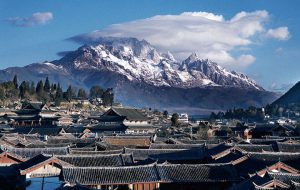
Pick you up at Lijiang airport. Transfer to hotel for checking in. Relax yourself in Lijiang Old Town.
–Lijiang Old Town, a well-preserved old city of ethnic minorities with brilliant culture, is a central town of the Lijiang Autonomous County of the Naxi Ethnic Minority in Yunnan Province. Located on the plateau which is 2,400 meters above the sea level and embraced by the tree-covered Lion Mountain in the west, Elephant and Golden Row Mountains in the north, vast fertile fields in the southeast and crystal clear water running through, the old town looks like a big jade ink slab, therefore got the alias the Town of Big Ink Slab (Dayanzhen).
Day 2 Lijiang
Sightseeing and Activities:Ganhaizi Meadow, Jade Dragon Snow Mountain, Spruce Meadow, Blue Moon Valley, Impression Lijiang Show, Baisha Old Town, Baisha Murals
Accommodation: Lijiang
Meals: Breakfast, Lunch
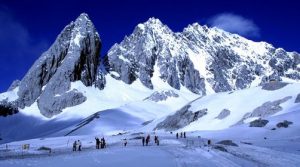
Drive about 30KM to Ganhaizi Meadow(3100M), you will take the sightseeig bus for a short visiting through the Baishuihe River, take the chairlift up to visit the Spruce meadowof Jade Dragon Snow Mountain. Then take a battery cart to Blue Moon Valley.
After lunch, you will enjoy the Impression Lijiang Ethnic Show directed by Zhang Yimou. It is held in Ganhazi Meadow about 3100M above the sea level.
And then, you can stroll through Baisha Old Town, which is an enchanting traditional Naxi style old town. Visit the Baisha Mural about 600 years old, which is one part of the World Cultural Heritage by the UNESCO 1997.
Day 3 Lijiang-Qiaotou – Tea horse Guesthouse
Sightseeing and Activities:the First Bend of Yangtze River,Tiger Leaping Gorge hiking
Accommodation: Lijiang
Meals: Breakfast, Lunch, Dinner
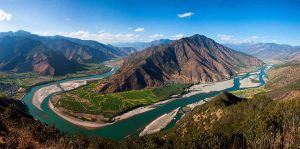
Early in the morning, guide will pick up you from hotel. Then you willtransfer to visit Tiger Leaping Gorge via Qiaotou Town ( 2.5hrs) along the Yunnan- Tibet Road. Take a stop on the way, have a bird view of the First Bend of the Yangtze River, a world-famous geological phenomenon of a V-shape bend and an extraordinary panoramic scene whose vistas you will long remember with great pleasure.
After arrival at the tickets office of Qiaotou Town, you will start the 2 hours trekking up to Naxi Family Guesthouse by the high trail. Take a break to have lunch at the beautiful guesthouse. Afterward,continue to the trekking (3-4hrs) from Naxi Family G.H. to Tea horse Guesthouse via 28 zigzagging turns. The trekking of this section is a challenge for you as the trail is difficult however once you have seen the splendid view view from an altitude about 3000m, you will know that is worthy. Then you will arrive at the sleep place of tonight –Tea horse Guesthouse. Have dinner and accommodation at here.
Trekking time: 5-6hrs
Day 4 Tea horse Guesthouse – Halfway Guesthouse- Haba Village-Baishuitai
Sightseeing and Activities:Tiger Leaping Gorge hiking, White Water Terraces
Accommodation: Baishuitai
Meals: Breakfast, Lunch
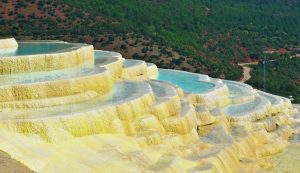
After breakfast,continue the trekking to Halfway Guesthouse ( 1.5-2hrs ) by a flat walk. Enjoy the most beautiful view section of the high train. Take a short break at Halfway G.H. Later process another 2 hours trekking to arrive at Tina’s Guesthouse. You will see several waterfall on the trail and view of the middle gorge with switchbacks of the Low Road. There is a small climb leading you to a ridge at 2480m. Then the trail descends gradually to Tina’s Guesthouse. Have lunch at Tina’s G.H.
After lunch, transfer toWhite Water Terraces (2.5hrs ), upon arrival , take a tour of White Water Terrace. After tour, check in your hotel.
Trekking time:3.5-4hrs
Day 5 Baishuitai – Niru Village
Sightseeing and Activities:Niru Village, Baishuitai
Accommodation: Niru Village
Meals: Breakfast, lunch, dinner
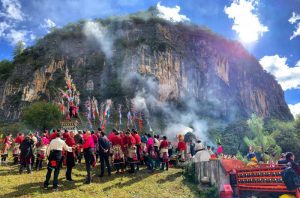
After breakfast, you will transfer to Niru Village of Shangri-La ( 5hours ) via Luoji Town. Take a stop at Baishui Terrace (white water terrace) The three – square – kilometre Baishui Terrace lies snugly on a mountain slope 2,380 metres above sea level in Baidi Village, Sanba Township, 101 kilometres southeast of the seat of Zhongdian County. The variegated karst landform of the tableland is an outcome of the continuous piling up of Tosco (calcite sediments), resulting from the disintegration of calcium bicarbonate contained in the water.
Upon arrival, check in your guesthouse. Overnight at local guesthouse of Niru.
Day 6 Niru Village–Nanbo Pasture(4100m) –Dingru Lake
Sightseeing and Activities:Nanbo Pasture(4100m), Dingru Lake
Accommodation: Dingru Lake
Meals:Breakfast, Lunch, Dinner
Today , you will firstly make a Hike for4 hours to Nanbao Yak Meadow (3500m), very close to the border of Sichuan and Yunnan provinces. Afterward further your trekkingabout 1.5-2hours to Dingru Lake.
Trekking time : 6-7hrs
Overnight camping near to Dingru Lake.
Day 7 Dingru Lake –Selie Lake –Niru- Xiadiaoge Meadow ( 3200m )
Sightseeing and Activities:Selie Lake, Niru Village, Xiadiaoge Meadow ( 3200m )
Accommodation: Shangri-La
Meals: Breakfast, Lunch, Dinner
Today is another challenge for you since it is a very long, tough day of Trekking. Morning,firstly you take 1-1.5hrs trekking to Selie Lake, after a nice walk around the lake area, followed another 3.5 hours trekking back to Niru Village . After later lunch at Niru Village, you will continue trekking 3.5hours (about 9km) to arrive at Xiadiaoge Meadow
Trekking time : 7-8 hours
Overnight Camping in the tent at Xiadiaoge Meadow near to Qicai Waterfall.
Day 8 Xiadiaoge Pasture- Dijie Pasture –Shudu Lake – Shangri-La
Sightseeing and Activities:Qicai Waterfall, Xiadiaoge Yak Meadow, Shudu Lake, Bengalaka Mountain Pass, Dijie Yak Meadow
Accommodation: Shangri-La
Meals: Breakfast, Lunch, Dinner
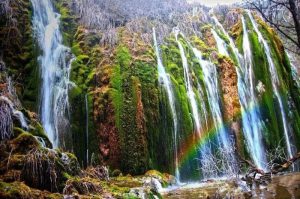
Departure at 7:30am in the morning, trekking to visit Qicai Waterfall , after the visiting, you will return back toXiadiaoge Yak Meadow,then followed by another trekking about 6hrs for 25km to Shudu Lake where is now one part of Pudaocuo National Park. During the trekking you will through virgin forests to view of Bengalaka Mountain Pass (3980 m), then continue to passing Dijie Yak Meadow.
After arrival Shudu Lake, you will take the green coach of the park to the main entrance to meet your driver. Then transfer to your hotel in downtown of Shangri-La. Have a good rest before dinner.
Trekking time : 6-7 hours
Overnight at Shangri-La
Day 9 Shangri-La
Sightseeing and Activities:Shangri-La
Accommodation:Songzanlin Monastery, a Tibetan Family, Dukezong Old Town
Meals: Breakfast, Lunch
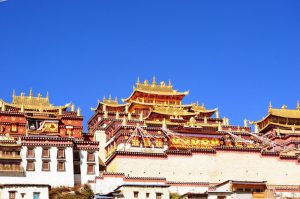
This morning you will clime up to visit Songzanlin Monastery, or ‘Little Potala’ as it is affectionately known, is a spiritual place that invites you to discover the mystery and traditions of Tibetan Buddhism. Since the 5th Dalai Lama chose the site through divination in 1679, the monastery has grown into the most important community of its kind in Yunnan.
Then you will make a visiting a local Tibetan Family to charting with the local people to know about their local life and at try to drink a cup of Yak Butter Tea. Enjoy the rest time of the day in Dukezong Old Town where you can see a big pray wheel about 10 meters high and the local house. In the evening, people will gather at here to dance Guochuang Tibetan dancing. During Yifeng, Tiaolu periods of the Tang Dynasty, Tubo government established a stockade village here, named “Dukezhong” meaning City of Moonlight, in addition, another stockaded village called “Likezhong” meaning City of Sunlight was built at the edge of opposite Naizi River.
Day 10 Departure from Shangri-La
Sightseeing and Activities:Departure from Shangri-La
Accommodation:None
Meals:Breakfast
Departure from Shangri-La
Recommended Hotels
| Destination | 5 Star | 4 Star | 3 Star | Hostels |
| Lijiang | Lijiang Hilton Garden Inn | Wangfu Hotel | Baisha Holiday Resort | Local Hostel |
| Shangrila | Shangrila Hotel | Zhaxidele Hotel | Shenqu Hotel | Local Hostel |
| Baishuitai | / | / | Baishuitai Hejia Hotel | / |
Service Included:
- Admission fees for all of the attractions listed in the itinerary;
- Meals as listed in the itinerary;
- Accomodation with breakfast;
- Hotels as listed in the itinerary;
- English-speaking tour guide;
- Private vehicle for transfers & sightseeing with experienced driver;
- A bottle of mineral water everyday;
Service Excluded:
- Any arrival and departure international airfares or train tickets;
- Any domestic airfares;
- Chinese visa fees;
- Airport pick-up and drop-off service;
- Personal expenses and gratuities to service staff;
- All optional programs;
- Surcharge for national holiday;
- Tips to guides and drivers. (For driver: RMB150/day/group; for guide: RMB200/day/group)
For this tour, you will visit the highlights of Kunming, Dali, Lijiang and Shangri-La. This is also a minority discovery tour, because you will find minority diversity during your trip, the minorities such as Huis,Yis, Bais, Naxis and Tibetan. Moreover, the Tiger Leaping Gorge will be the most impressive part of your trip, you could be shocked by the ruggedness and magnificence of Tiger Leaping Gorge and the mountains around when you are there. This part can not be missed. You will have some time to visit muslim areas.
Highlights
- Experience the local students’ study life by having classes, games, eating etc.
- Doing voluntary work at a poor village.
- Have leisure time with students.
- Cycling and trekking in Lijiang.
Breif Itinerary
- Day 1 Arrive in Kunming
- Day 2 Kunming Muslim Tour-Tonghai
- Day 3 Tonghai-Jianshui
- Day 4 Jianshui-Gejiu
- Day 5 Gejiu-Shilin-Kunming
- Day 6 Kunming-Dali by Speed Train
- Day 7 Dali-Weishan-Dali
- Day 8 Dali-Lijiang
- Day 9 Lijiang
- Day 10 Lijiang-Tiger Leaping Gorge-Haba Village
- Day 11 Haba Village-Baishuitai-Shangrila
- Day 12 Shangrila
- Day 13 Departure from Shangrila
Google Map
Detailed Itinerary
Day 1 Arrive in Kunming
Sightseeing and Activities:Arrive in Kunming
Accommodation: Kunming
Meals: Lunch
We will meet you at Kunming airport or railway station and transfer you to the hotel. Dinner at local Muslim restaurant in Kunming. The rest of the day is on your own to relax or explore evening scene of the city.
Day 2 Kunming Muslim Tour-Tonghai
Sightseeing and Activities: Nancheng Mosque, Najiaying Great Mosque, Xiushan Park
Accommodation: Tonghai
Meals: Breakfast, lunch
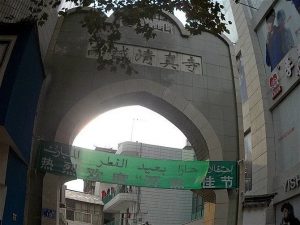
This morning, you will go to pray at Nancheng Mosque. The Nancheng Mosque is the largest mosque in Kunming, the mosque was constructed during the Tang Dynasty and continued to be renovated and reconstructed through the Qing Dynasty. The mosque’s design reflects that of Chinese temples due to the Buddhist culture.
This afternoon, drive to Tonghai County. Visit and pray at Najiaying Great Mosque which is about 110 km away from Kunming. Then visitXiushan Park in Xiushan Mountain. Xiushan Moutain is one of the four famous mountains in Yunnan Province.
Day 3 Tonghai-Jianshui
Sightseeing and Activities: Jianshui Old Town, Zhu Family Garden, Jianshui Confucius Temple
Accommodation: Jianshui
Meals: Breakfast, lunch
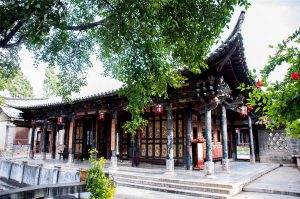
Drive to Jianshui County. Stroll around Jianshui Old Town, to see Chaoyang Gateway Tower, Old Well of Jianshui.
Then make the visit to Zhu Family Garden, the so-called ‘Grand View Garden’ of South Yunnan Province, which is a representative of Chinese residential houses of the Qing Dynasty (1644-1911). When walking through the garden, it really seems as if you are strolling through the Grand View Garden depicted in ‘A Dream of the Red Mansions’ (a famous Chinese Classical novel by Cao Xueqin (1724-1764) in the Qing Dynasty). This garden was the residence and ancestral temple of the rich man Zhu Weiqing and his brother in the Qing Dynasty (1644-1911).
Later,visit Jianshui Confucius Temple. This over 700-year-old temple was initially built in the 22nd year of Zhi Yuan reign in the Yuan Dynasty (1285AD). It has been repaired and extended for about 50 times and now covers an area of 7.6 hectares. Based on its scale, construction standard and excellence in preservation, Jianshui Confucius Temple stands second only to the one in Qufu of Shandong Province, hometown of Confucius and the one in Beijing. It is the best large-scale Confucius Temples in south China.
Day 4 Jianshui-Gejiu
Sightseeing and Activities: Tuanshan Village, the Garden of Family Zhang, Double Dragon Bridge, Great Mosque of Shadian
Accommodation: Geliu
Meals: Breakfast, lunch
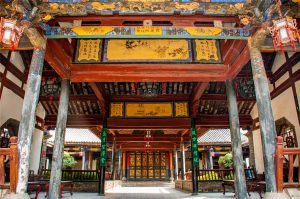
This morning, you’ll visitTuanshan Village andthe Garden of Family Zhang; Tuanshan Village is a rare surviving example of an intact-albeit neglected-traditional walled Yunnan village compound in southwestern China, and has been added to the 2005 list of internationally significant sites by the World Memorial Fund for Architecture (WMF), an international fund for the protection of world heritage sites. And Have a stop to take picture at Double Dragon Bridge.
Then drive to Shadian Town in Gejiu City. Pay a visit to Great Mosque of Shadian and pray there. There is a Muslim Accessories shop beside the mosque, where you can have or do a little shopping there. Shadian Grand Mosque is the largest mosque in the southwest and is one of the 100 famous mosques of China. Shadian mosque exhibits an elegant architectural style.
Day 5 Gejiu-Shilin-Kunming
Sightseeing and Activities: Stone Forest, flowers and birds market
Accommodation: Kunming
Meals: Breakfast, lunch
Drive to Shilin County. Visit Stone Forest, which is one of the largest plantations of rapeseed flowers in Southwest China. Fields covered with golden rape stretch as far as the eye can see and form seas of yellow buds. Combined with a unique terrain dominated by karst features with small basins among mountain ranges, the place boasts very unique landscape features.
Drive back to Kunming, visit flowers and birds market in Kunming downtown.
Day 6 Kunming-Dali by Speed Train
Sightseeing and Activities: Three Pagodas in Chongshen Monastery, Erhai Lake, Dali Ancient Town
Accommodation: Dali
Meals: Breakfast, lunch
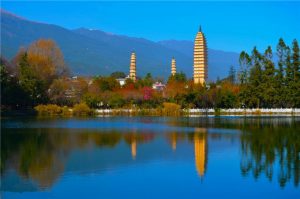
Take the high speed train to Dali (2 hours). After arrival, meet your local guide and transfer to the hotel in Dali Ancient Town. Dali which is a historically and culturally famous city of China, is renowned for her historical interest and Bai ethnic culture.
After that, you will visit the Three Pagodas in Chongshen Monastery which has a history of over 1,800 years located at the foot of Cangshan Mountain facing to the Erhai Lake. Three Pagodas are made of three ancient independent pagodas forming a symmetrical triangle.
After lunch, cruise in Erhai Lake by the small boat to the Jinsuo Islet in the east Erhai Lake. There are 200 Bai ethnic families around 1000 people in Jinsuo Island.In Erhai Lake cruise, you will enjoy the green Cangshan Mountain and the Three Pagodas from a far as well as lots of birds and seagulls flying over the lake.
Afterwards, visit Dali Ancient Town. It can be dated back to the year 1382 during the Ming Dynasty (1368-1644) and has been among the top listed historical cities of China since 1982. With Erhai Lake to the east, and Cangshan Mountain to the west, its grand city wall, traditional Bai ethnic minority folk houses and marvelous scenery have been attracting many visitors. The tour in Dali Ancietn Town will include the Foreigner Street, the Gate Towers and the Ancient City Wall.
Day 7 Dali-Weishan-Dali
Sightseeing and Activities: East Lotus Village, Donglianhua Mosque, Weishan Ancient Town
Accommodation: Dali
Meals: Breakfast, lunch
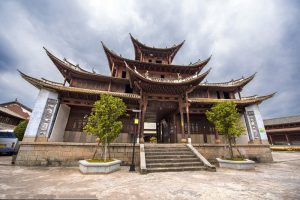
After breakfast, drive about one hour to Weishan Yi and Hui Autonomous County. Visit East Lotus Village(Donglianhua Village)before arrival in Weishan Ancient Town. Donglianhua Village also has rich minority and strong Muslim customs. The most outstanding representative is the Donglianhua Mosque in the village. Donglianhua Mosque is a major attraction in Donglianhua Village. This large-scaled mosque built in unique folk style is a great destination for the admiration of Muslim architecture and culture. Drive to visit Weibaoshan Mountain at the first which is one of the 14 China’s most famous Daoist holy mountains.
Come back to Weishan Ancient Town, visit Big and Small Temples on the way. You will explore Weishan Ancient Town in the afternoon. Weishan Ancient Town was built more than 600 years ago. There are a lot of ancient buildings in it. The magnificent Building Gongchen is the symbol of the ancient city.
After that, drive back to Dali.
Day 8 Dali-Lijiang
Sightseeing and Activities: Xizhou Town, Zhoucheng Village, Morning Market, Lijiang Old Town
Accommodation: Lijiang
Meals: Breakfast, lunch
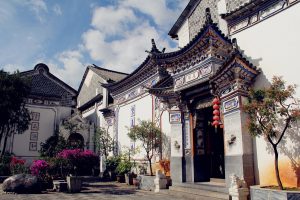
In the morning, you will head for Xizhou Town to fully appreciate Bai-style traditional architectural courtyards, taste their fragrant Three-Course Tea and explore their distinctive culture. Xizhou is our home. This little village has been called ‘a living art museum’ due to its unusual concentration of nationally protected heritage sites, mostly including architecture that spans the Ming Dynasty (1368 – 1644) until the creation of New China in 1949, but also includes centuries old trees, parks, and wildlife preserves.
Strolling through the morning market and main walking street will reveal a vibrant town with a healthy mix of traditional Bai culture and modern influence from Eastern China and abroad. It is the balance of development and forward thinking that exists in Xizhou that makes it special.
After Xizhou, visit Zhoucheng Village which is the largest Bai ethnic village in China and the Bai Ethnic Tie-dying Cloth Workshop where you can take some special souvenir with the Bai ethnic style. The tie-dyeing products in Zhoucheng Village are well sought after, both at home and abroad. Do drop by and witness for yourself the process of this historical craftsmanship. Who knows, you will return home with some cheap and beautiful crafted cloths.
Transfer to Lijiang in the afternoon. You will be relaxed around Lijiang Old Town, a well-preserved old city of ethnic minorities with brilliant culture, is a central town of the Lijiang Autonomous County of the Naxi Ethnic Minority in Yunnan Province. Located on the plateau which is 2,400 meters above the sea level and embraced by the tree-covered Lion Mountain in the west, Elephant and Golden Row Mountains in the north, vast fertile fields in the southeast and crystal clear water running through, the old town looks like a big jade ink slab, therefore got the alias the Town of Big Ink Slab (Dayanzhen).
Day 9 Lijiang
Sightseeing and Activities: Ganhaizi Meadow, Baishuihe River, Jade Dragon Snow Mountain, Spruce Meadow, Baisha Old Town, Baisha Mural
Accommodation: Lijiang
Meals: Breakfast, lunch

Enjoy the sunrise of the Jade Dragon Snow Mountain and Lijiang Ancient Town in the morning, drive about 30KM to Ganhaizi Meadow(3100M), you will take the sightseeing bus for a short visiting through the Baishuihe River in Blue Moon Valley, take the chairlift up to visit Jade Dragon Snow Mountain. The cableway will be arranged according to the condition of the mountain. You will hike around 1 hour in the original forest in Spruce Meadow(3200M).
After lunch, enjoy Impression Lijiang Show which is A Spectacular Show with Jade Dragon Snow Mountain as the Backdrop, directed by the famous director Zhang Yimou. Impression Lijiang is a magnificent outdoor singing and dancing performance demonstrating the tradition and lifestyle of the local ethnic people. It is another creation of famous Chinese director Zhang Yimou.The show is innovatively staged in the morning and afternoon, at 3,100 meters (10,100 feet) above sea level with Jade Snow Mountain as the breathtaking backdrop.
Stroll through Baisha Old Town, which is an enchanting traditional Naxi style old town. Visit the Baisha Mural about 600 years old, which is one part of the World Cultural Heritage by the UNESCO 1997.
Transfer back to hotel in the late afternoon.
Day 10 Lijiang-Tiger Leaping Gorge-Haba Village
Sightseeing and Activities: First Bend on the Yangtze River, Tiger Leaping Gorge, Haba Village
Accommodation: Haba Village
Meals: Breakfast, lunch
From Lijiang, you’ll drive about 60KM to the First Bend on the Yangtze River with imposing gorge scenery.
Visit the Tiger Leaping Gorge, the deepest gorge in the world. With 34 rapids of the Yangtze River, it is called the Jinsha in this area because you can find gold in the river. Afternoon, you’ll head for Shangri La, the former Zhongdian which is welknown as the paradise destination for every tourist.
Then drive to Haba Village for overnight.
Day 11 Haba Village-Baishuitai-Shangrila
Sightseeing and Activities: Baishuitai, Dukezong Ancient Town, Guishan Park
Accommodation: Shangrila
Meals: Breakfast, lunch
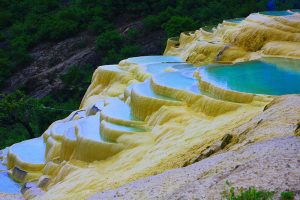
Drive to visit Baishuitai. Baishuitai or Baishui Tableland, also named the White Water Terraces, is located in the foothills of the Haba Snow Mountains, 101 kilometers (about 62 miles) southeast of the Shangri-la County. It is known as one of the most attractive destinations in mysterious Shangri-La and is an ancient Chinese landform with a history of 200,000 to 300,000 years.
After that, drive to Shangrila. Visit Dukezong Ancient Town and Guishan Park. Dukezong is an important town of the Ancient Tea-horse Trade Caravan from Yunnan to Tibet and India.The Square Street in the old town, at the heart center of the old town, is the main tour area gathering a maze of cobbled lanes, white stupas, renovated tourist shops, café, bars, etc. Further away from the square street, the narrow winding lanes will give you a quieter shelter and unveil you more authentic local touch with the unrestored structures and real local life.
Day 12 Shangrila
Sightseeing and Activities: Ganden Sumtseling Monastery, Pudacuo National Park, Tibetan village and family
Accommodation: Shangrila
Meals: Breakfast, lunch
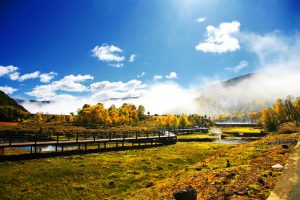
In the morning, visit the Ganden Sumtseling Monastery, the largest Tibetan monastery in Yunnan. Songzanlin Monastery has another alias – ‘the little Potala Palace ‘, so named because the whole monastery is in the traditional style with mysterious atmosphere.
Pay a visit to a Tibetan village and family. Have yak butter lunch with local people.
This afternoon, you’ll visit the tranquil Shudu Lake in Pudacuo National Park.It is located in one of the most biologically-diverse regions of the world. While the region comprises only 0.7 percent of China’s land area, it contains more than 20 percent of the country’s plant species, about one-third of its mammal and bird species and almost 100 endangered species.
Day 13 Departure from Shangrila
Sightseeing and Activities:Departure from Shangrila
Accommodation:
Meals:
Departure from Shangrila
Recommended Hotels
| Destination | 5 Star | 4 Star | 3 Star | Hostels |
| Lijiang | Lijiang Hilton Garden Inn | Wangfu Hotel | Baisha Holiday Resort | Local Hostel |
| Kunming | Crown Plaza Kunming City Centre | Wenhui Hotel | Baiyun Hotel | Local Hostel |
| Dali | Hilton Dali Resort And Spa | Landscape Hotel | Gnosis Hotel | Local Hostel |
| Shangrila | Shangrila Hotel | Zhaxidele Hotel | Shenqu Hotel | Local Hostel |
| Jianshui | Linan Hotel | Zhu Family Garden Hotel | Jianshui Hotel | Local Hostel |
| Gejiu | Local Hostel |
Service Included:
-Admission fees for all of the sightseeing spots listed in the itinerary;
-Meals as listed in the itinerary;
-Accommodation with breakfast as listed in the itinerary;
-Private English-speaking tour guide and vehicle for transfers & sightseeing;
-Service charge & government taxes;
-Luggage transfers between airports and hotels;
-Tibet travel permit and all other necessary permits to Tibet;
-Two bottles of mineral water each day.
Service Excluded:
-Any arrival and departure international airfares or train tickets;
-Chinese visa fees;
-Excess baggage charged by Airlines;
-Single room supplement;
-Tips to guides and drivers;
-Personal expenses and gratuities to service staff;
-Personal travel insurance;
-All optional programs;
-Domestic flight/train not listed in the itinerary. (We can provide you the domestic flight/train ticket booking service at the BEST discount price; please contact us our travel experts for the details.)
Travel Tips:
-Visitors are advised to always carry changes of clothing due to the large variations in temperature between day and night.
-The climate is relatively dry, so drink more water every day.
-Protecting oneself from strong UV radiation at high altitude.
-Protecting oneself from altitude sickness. Lessen the effects of altitude sickness, avoid strenuous exercise and have plenty of rest.
-Respect local customs , habits, and religious beliefs.
-Situated on the northern edge of the tropical zone, Xishuangbanna area is hot, humid and rainy; don’t forget to take an umbrella or a raincoat when go out.
-When take photos, please pay attention to your safety, do not shoot in dangerous areas.
Location: Northwest Yunnan, near Lijiang
Description: A difficult yet amazing trek in one of the world’s deepest and most marvelous gorges. It passes through some of the most naturally stunning and diverse landscapes China-if not the world-has to offer, making this once adventurous trek a popular choice for off-the-beaten track travellers. The trek passes in front of one of the highest peaks in Asia, Meili Snow Mt., and high above the deep crevasses of the Gorge, delighting every backpacker with truly awesome sights and great photos.
Access: Lijiang to Qiaotou or Daju
Starting: Qiaotou or Daju
Ending: Daju or Qiaotou or Haba Village
Route A
Daju-> Walnut Grove ( Woody )-> Tina’s -> Middle Rapids -> Halfway Guesthouse -> 28 Turns-> Nuoyu Village-> Qiaotou
Remarks: from Daju to Qiaotou is upstream, Qiaotou to Daju is downstream, you can make the trek in either direction.
Part I : Qiaotou <=> Halfway Guesthouse, 6-8 hours
Part II : HWG <=> Walnut Grove, 3-4 hours
Part III : Walnut Grove <=> Daju : 3-4 hours
This means that trekkers leaving from Qiaotou will probably have to spend the first night in HWGH while trekkers leaving from Daju will have the choice of Walnut Grove or HWG.
Route B
Qiaotou-> Nuoyu Village-> 28 Turns-> Halfway Guesthouse ->Middle Rapids -> Tina’s -> Walnut Grove ( Woody )-> Jiangbian-> Haba-> Sanba Village(Baishuitai)
Maps>> Tiger Leaping Gorge Trekking Map
Two paths
The high path : long, strenuous & dangerous but amazing view : this is the “real” stuff. To find it from Qiaotou, walk 80m after the “entrance-fee short cut” or 200m after the entrance, take the large road on the left, pass a school sport yard, take the small path going up and follow the arrows of various colors.
The walk requires some previous trekking experience and good fitness. The path is sometimes slippery, sometimes very narrow (20cm), sometimes next to a ravine… It is OK under light rain but not more. In any case, check the conditions before going by asking at Backpacker’s Cafe in Qiaotou. If you stick to the path and follow the arrows (red, yellow, white or blue) and the shoes traces in the dust, you should not have any trouble finding your way.
The low path : relatively easy, flat and boring. You can really walk in good condition from Walnut Grove to Km 9 only : from Qiaotou to km 9 is the domain on the Chinese tourist cars and buses (the Chinese come to see the Tiger Leaping Rock at Km 10) and you will have to take a lift or bring a mask gas as the road is transformed into a big dust cloud.
Two places to start (for the high path)
Qiaotou : Buses from Lijiang to Zhongdian stop at Qiaotou, 7:30~15:00, 2hrs
Daju : Buses from Lijiang, 7:30~13:30, 3hours,
Itinerary
The popular section of trail begins at Qiaotou, two hours out of Lijiang. You can take a Hutiao / Zhongdian-bound bus from Lijiang, get off at Qiaotou(Y13-15), leave your bag at Backpackers’ Cafe(unless you plan to trek further to Baishuitai near Haba), then change to a local minibus to the entrance of the gorge.
The entry fee is currently Y50, although it can be easily avoided if one arrives before the office opens, or at some opportune moment when the guard is out (or in the confusion if you’re arriving with a number of other hikers).
Typically the hike is spread over two days, with a night spent at one of the many guest houses along the route, ending with a 40-60 minute bus-ride from Walnut Grove to Qiaotou (Y50-60 for a small van). More adventuresome types will continue to Baishuitai beyond.
D1 Qiaotou-> Nuoyu Village-> 28 Turns-> Halfway Guesthouse
Your hiking trip starts from Qiaotou, the 28 zigzaging turns will be a real stuff. The 26km takes about 6-8 hours. From the top of “28 turns” on the high path further uphill to a place of altitude above 3000m, you can have a view of the panorama of the entire Gorge. Check this at a Tea Horse or Guesthouse if you cannot figure it out yourself.
You will arrive at Halfway Guesthouse to finish today’s trekking. At an altitude of 2500m, you get a magnificent view over the Yangtze River below and the Yulong Mountain right in front of you. For the keen photographer this trek provides a great opportunity to capture nature’s best moments.
Halfway Guesthouse organizes two-day treks up Haba Snow Mountain with an overnight stay uphill at a point of altitude above 4000 meters. Sleeping bags and mats for the trek can be rented at the guesthouse. Successful trekkers are awarded “donkey shoes” as souvenirs and their names and contact information are recorded in the “donkey skin book” at the guesthouse. Similar treks can also be arranged at Five Fingers Mountain Guesthouse.
D2 Halfway Guesthouse ->Middle Rapids -> Tina’s -> Walnut Grove ( Woody )
Three roads lead to the Middle Rapids. One starts at the right of Woody No.2 (Y2 for “road crossing” fee), another starts near Teacher Zhang’s Guesthouse (Y5 “road crossing” fee), the third starts near Chateau Woody where you see a sign advertising Xia Yin Gu’s guide service. Once you enter, just go down and you won’t miss it! The scenery is the most spectacular in the entire Tiger Leaping Gorge.
To return, you may go back on the same road, or take a different one. Notice that on the third road close to the rapids there is a very dangerous section of a few dozen meters long called “Tiny Sky” (and you need to pay between Y2-5 depending on the condition to cross that). At the rapids itself, there are two places charging “road crossing” fees of 2Y each: one for a small bridge leading to the first road, the other for crossing the wooden plank to the Middle Tiger Leaping Rock. The visit takes between 3 and 5 hours.
Reminders:
- Beware of the touts hanging around various guesthouses on the low path (Walnut Grove included except at Sean’s Guesthouse): Offending these people may incur a harsh beating plus a demand for hefty money.
- It’s out of electricity sometimes in Walnut Grove, makes sure you have a flashlight.
Lodging
Qiaotou
- Gorge Village Hotel, Xia Gu Chun (0887 880 6246), opposite Backpacker’s Cafe, Dorm 10Y in 2/3 bed’s room, Dble 25, Dble with bath 120Y / Restaurant
- Jade Dragon Hotel “Lotus Hotel” (0887 8806 196), on the right from Bus Station, Dorm 12/15Y in 5/3 bed’s room, Dble with bath 160Y / Restaurant
On the high path (kilometers from Qiaotou):
- Naxi Family Guesthouse, 6km, Nuo Yu Village, 1.5-2 hours from Qiaotou, 5-8 hours from Walnut Grove / Dorm Y10 / Basic / Hot water / Restaurant
- Old Horse Guesthouse,6.5km on a separate path, Nuo Yu Village, 40min walking up from low path at km 6.5, 1.5-2 hours from Qiaotou, 5-8 hours from Walnut Grove / Dorm Y10/ Basic
- Tea Horse Trade Guesthouse and Peace Gorge Guesthouse, both at 12km, Ya Cha Corner, 5min between the two, 1 hour walking up from low path at 11km, 3-6 hours from Qiaotou, 3-5 hours from Walnut Grove / Dorm Y10 / Basic / Hot water / Restaurant
- Halfway Guesthouse, 17km, Ben Di Wan Village, 1 hour walking up from low path at km 14, 4-8 hours from Qiaotou, 2-4 hours from Walnut Grove / Dorm 10Y,12Y or 15Y in 1,2,3 or 4 bed’s rooms / Basic but what a view (check the toilets…) / Hot water /Restaurant
- Five Fingers Mountain Guesthouse, 18km, Ben Di Wan Village, 4-8 hours from Qiaotou, 2-3.5 hours from Walnut Grove / Dorm Y10/bed, Hot water / Restaurant . From here it is 3.6 km (2 hours) to Tina’s Guesthouse on the low path
On the low path (kilometers from Qiaotou):
- Woody No.2 (Zhongxia Meijing Shanzhuang), 18km / Dorm 10Y per bed / Basic / Hot water / Restaurant
- Teacher Zhang’s Guesthouse, 18.5km / Dorm 10Y per bed / Basic / Hot water / Restaurant
- Tina’s Guesthouse, 20km, in front of the path going up to the high path, 45mn from Walnut Grove / Dorm 10Y per bed / Basic / Hot water / Restaurant / If you are walking the low path to Qiaotou, take the shortcut just before the Guesthouse to avoid 1.5km of turning road.
- Midgorge Guesthouse, the former Ya Cha Hotel, now at 21km / Dorm 10Y per bed / Basic / Hot water / Restaurant
At Walnut Grove (23km from Qiaotou):
- Chateau Woody, the first one from Daju / Great view from the clean room for 10Y or 15Y per bed in 1, 2 or 3 bed’s room / Hot water in the evening / Clean Toilets / Restaurant
- Sean’s Guesthouse “Spring Guesthouse”, the first one from Qiaotou / Dorm 15 in 8 or 12 bed’s rooms / Dorm 20 in Dble / 42 big beds / Hot water / Restaurant
At Daju
- Snowflake Hotel or Tiger Leaping Gorge Hotel have cheap beds.
D3 Walnut Grove -> Haba Village
An adventurous add-on to the gorge trek is to continue north all the way to Haba village and the limestone terraces of Baishuitai, making it a four-day trek from Qiaotou. From here you will travel on to Zhongdian.
From Walnut Grove to Haba via Jiangbian, it’s about 30km and much of it is uphill, which takes 7-8 hours, more difficult than the high trail of the Tiger Leaping Gorge. After a long ascent, you will reach the village of Haba for the night. A few hundred residents in Haba, many of them are Muslim, and a couple of guesthouses tucked into a valley that spills down a hillside with mountains rising on three sides make up Haba. The Haba Snow Mountain Inn, a typical rural Yunnan guesthouse – a family farm with a couple of rooms converted to guesthouse use.
D4 Haba Village to Baishuitai
A brief steep ascent in the beginning and a couple of steep descents are the only diversions from what is otherwise largely a flat trek and certainly much easier than the Walnut Grove to Haba portion.
Baishuitai (White Water Terrace), believed to be the birthplace of Naxi Dongba culture, is not as nice as Haba. A cluster of buildings around the base of the terraces themselves form the de-facto town of Baishuitai, which falls under the denomination of Sanba town. The main attraction is the limestone terraces, though interesting to see and worth the Y30 of admission. Basic accommodation is available in the town for Y10/bed. Off the main road most of the local dwellings are in the Naxi style and feature the twin-fish motif.
For moving on, the first bus to Zhongdian departs at 8:30AM, while others pass through throughout the day – either heading north to Zhongdian or south to Haba, Jiangbian, Tiger Leaping Gorge or Lijiang. On your ride to Zhongdian (4 hours), you can get off at the turn-off to Bita Lake, 25km east of Zhongdian and hike there.
Reminders
- Wear light hiking boots with ankle support.
- There is a risk of landslides in bad weather, though no one would like to step out of the door on a rainy day, just in case the weather changes when you are on route. After all, it’s a 2-4 days trek.
- As with any touristy area, there are endless efforts of varying legitimacy to help you part with your RMB along the route. At various intervals, old women, young girls and sundry others will demand small fees for using optional parts of the path. Some, such as the decent to the river below Tina’s guest house, are particularly annoying, as you’ll be asked for a few RMB more at what seems like every step of the way, with an elaborate story to explain the cost. Also be aware that some guest houses may try to mislead you about your hiking options, for example Tina’s guest house has been known to insist that while you may descend to the river below, you must hike back up, and may not continue along the river to Walnut Grove–one of the most spectacular sections of the trail.
Hotel Information
- Opening Year: 2018.
- Rooms & Facilities: The hotel offers various room types, including standard double rooms, king-bed rooms, family rooms, and deluxe triple rooms. All rooms are equipped with free Wi-Fi, wired broadband, TV, and other amenities.
- Address: Baidi Village (白地村), Sanba Township (三坝乡), Shangri-La City (香格里拉市), Diqing Tibetan Autonomous Prefecture (迪庆藏族自治州), Yunnan Province (云南省).
- Nearby Attractions:
The Baishuitai Scenic Area (白水台景区) is very close to the hotel. It is the largest travertine terrace in China, known as the “Chinese version of Pamukkale,” and a paradise for photography enthusiasts.
Additionally, the Dongba Culture Village (东巴文化村) is nearby, where visitors can learn about the Dongba culture of the Naxi (纳西族) people.
Transportation
- Public Transport: Buses depart from Shangri-La Bus Station (香格里拉客运站) to Baishuitai (Sanba Township) twice daily at 9:00 AM and 2:00 PM, with a journey time of approximately 4 hours.
- Self-Driving: From Shangri-La (香格里拉), take National Highway 214 to Baishuitai (白水台), covering about 100 kilometers with good road conditions.
Business Hours
The hotel operates 24/7, with round-the-clock front desk service.
Booking
Reservations can be made through online travel platforms such as Ctrip (携程).
Contact
- Phone: 15812062722
Baiyuyuan Hotel (白玉园宾馆) boasts a prime location with rich natural landscapes and cultural attractions nearby, making it an ideal choice for exploring Baishuitai (白水台) and the surrounding areas.
Yunnan is the Kingdom of plants and flowers. Wherever you go, you will see different plants and flowers, for a couple of hundreds years, flowers hunters from western countries come here over and over again just want to see the new plants. If you have the interests in flowers, these are the right places for you.
Highlights
- Experience the local life and ethnic culture.
- Appreaciate the booming flowers and charming landscape.
- Visit the famous cities, Kunming, lijiang, Dali and Shangrila.
Breif Itinerary
- Day 1 Arrival in Kunming
- Day 2 Kunming-Dali
- Day 3 Dali
- Day 4 Dali – Shaxi – Laojun Mountain National Park
- Day 5 Laojun Mountain National Park – Tiger Leaping Gorge
- Day 6 Tiger Leaping Gorge – Base Camp
- Day 7 Base Camp-Top of Haba-Base Camp
- Day 8 Base Camp- Haba Village
- Day 9 Haba Village – Baishuitai – Shangrila
- Day 10 Shangrila
- Day 11 Shangrila-Lijiang
- Day 12 Lijiang
- Day 13 Departure from Lijiang
Google Map
Detailed Itinerary
Day 1 Arrival in Kunming
Sightseeing and Activities: Green Lake Park
Accommodation: Kunming
Meals: Lunch
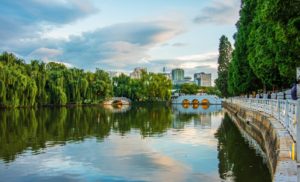
Welcome to Kunming, the Spring City of China! Upon arrival at the Kunming airport/train station, the local tour guide and driver will meet you in the arrival hall and escort you to your hotel. You’ll begin your journey to the diverse and captivating province of Yunnan from the capital city, Kunming.
After a short rest, stroll in the most picturesque park in Kunming urban area – the Green Lake Park, a charming area of tea houses and small boutiques selling handicrafts and beautiful local paintings. Here you can share the happiness of local people’s doing tai chi, performing local opera, and other vibrant activities. If you visit the park in November or December, you will see the grandeur of huge flocks of red-beaked seagulls that migrate there from Siberia.
Day 2 Kunming-Dali
Sightseeing and Activities: Kunming Botanic Garden, Dali Ancient Town
Accommodation: Dali
Meals: Breakfast, Lunch
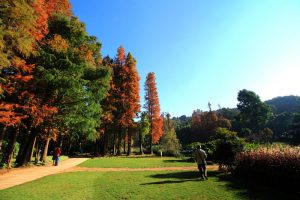
In the morning, visit Kunming Botanic Garden where you can see the plants and flowers of Yunnan. Four and half hours drive to Dali in the afternoon. Afterwards, visit Dali Ancient Town which is 13 kilometers away from Xiaguan in Dali City. It can be dated back to the year 1382 during the Ming Dynasty (1368-1644) and has been among the top listed historical cities of China since 1982. With Erhai Lake to the east, and Cangshan Mountain to the west, its grand city wall, traditional Bai ethnic minority folk houses and marvelous scenery have been attracting many visitors. The tour in Dali Ancient Town will include the Foreigners Street, the Gate Towers and the Ancient City Wall.
Day 3 Dali
Sightseeing and Activities: Cangshan Mountain
Accommodation: Dali
Meals: Breakfast, Lunch

One-day trip in Dali to visit the Cangshan Mountain. We will drive up the hill with some stops to see the flowers of the area. The Cangshan Mountain, also known as Diancangshan, is named after its verdant forests. The Canshan Mountain is a chain of the Yunlin Mountain of the Hengduan Mountains. Starting at Eryuan in the north and ending at Xiaguan in the south, it measures 42 km in length and 25 km in width. Overlooking the Erhai Lake in the east, the Cangshan Mountain is of great splendors and the scenery is unique. The Cangshan Mountain comprises 19 peaks, the highest of which is Malong Peak at an elevation of 4122 meters above sea level. It is snow-capped all the year round with a moraine lake on the summit. There are 18 brooks running down the 19 peaks. The snow-melted water between every two peaks rushes down and converges into the Erhai Lake. Cangshan Mountain boasts of a rich vegetation of numerous rate flowers, trees, and other plants. It is called a national alpine botanical garden. You can find many alpine flowers, of which azaleas are the most famous in the Cangshan Mountain.
Day 4 Dali – Shaxi – Laojun Mountain National Park
Sightseeing and Activities: Shaxi Old Town, Mt. Laojunshan
Accommodation: Lijiang
Meals: Breakfast, Lunch
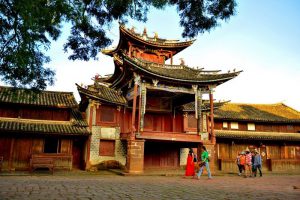
This morning, drive to visit Shaxi Old Town. Shaxi is the last remaining ancient market town of its kind on the Tea & Horse Caravan Trail. This trail is a trading route that connected Tibet, Sichuan, and Yunnan to countries in southeast Asia, also called the Southern Silk Road. The World Monuments Fund (WMF) has listed Shaxi as one of the 100 most endangered sites in the world in 2001.
Drive to Mt. Laojunshan. It has virtually been untouched by any urban development. This place covers an area of 2,340 square km and is approximately 93 km west of Lijiang City. This mountain has become a well-known spot in Yunnan for many species of plants like peony, rhododendron and begonia.
Day 5 Laojun Mountain National Park – Tiger Leaping Gorge
Sightseeing and Activities: Shigu Town, Tiger Leaping Gorge
Accommodation: Tina’s House
Meals: Breakfast, Lunch
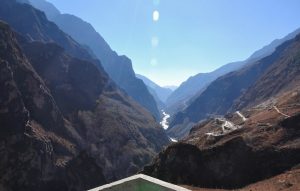
In the morning, spend more time in the mountain, and then drive to Shigu Town, visit the Iron Chain Bridge, the Red Army’s Long March Memorial Monument in the Shigu Old Town. The town of Stone Drum got its name from a large, cylindrical, marble tablet shaped like a drum. The scenery is magnificent as the road running through the Lijiang valley which is filled with wheat fields and drying haystacks.
Then go far to visit the Tiger Leaping Gorge, the deepest gorge in the world. With 34 rapids of the Yangtze River, it is called the Jinsha in this area because you can find gold in the river.
Tonight you will have overnight at Tina’s House.
Day 6 Tiger Leaping Gorge – Haba Village – Base Camp
Sightseeing and Activities: Haba Village, trekking
Accommodation: Lijiang
Meals: Breakfast, Lunch
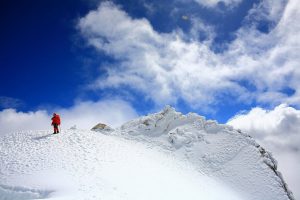
Today we will embark on a beautiful, but demanding hike from Haba Village (2600m) to base camp of Haba Snow Mountain(4100m). The trek is approx 15km and will take around 6-8 hours. We will pass by yak pastures and azalea forests and enjoy a picnic lunch on the way. We will reach the base camp in the afternoon.
–The Haba Mountain, with its main peak being 5,396 meters in height, stands 120 kilometers to the southeast of the seat of Shangri-La. And its domain of 21,908 hectares, covered with a vertical distribution of forests, is rich in wildlife and plant resources. The nature reserve extends 22 kilometers from south to north and 19 kilometers from east to west. About half of the 13,000 kinds of plants in Yunnan could be found in here. The primeval forest serves as the valuable scientific research base. In addition, there are more than 900 varieties of rare medicinal materials, more than 25 species of protect animals at the national grade and about 50 kinds of azalea.
Day 7 Base Camp-Top of Haba-Base Camp
Sightseeing and Activities: Trekking
Accommodation: Lijiang
Meals: Breakfast, Lunch
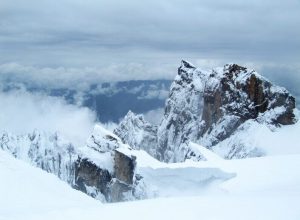
Set out in the early morning (4:00am) for the 4km (5 hour) hike to the top of Haba Snow Mountain (5396m), passing over two snowy slopes before reaching the top. It is not a technical trek but requires a lot of energy as the altitude is high and the slopes are long. From the top you will get spectacular views of the Tiger Leaping Gorge 3500 vertical meters below!!! Descend for 3 hours down to the Base Camp for overnight stay.
Note: If the weather does not permit us to climb Haba Mountain, we will give up the climbing. If you do not want to climb to the top of Haba Snow Mountain, we will cut this day Haba Mountain climbing tour, and trek down to Haba Village in this day.
Day 8 Base Camp-Yellow and Black Lake – Haba Village
Sightseeing and Activities: Black Sea Lake
Accommodation: Haba Snow Mountain Hostel
Meals: Breakfast, Lunch
Enjoy the sunrise over Haba Mountain. Spend the morning doing a circular route of approx. 3-4 hours treking to Black Sea Lake or Heihai (4170 m) in front of the Haba Mountain, through meadows, forests and rivers. In the late afternoon, arrive at Haba Village. Stay at Haba Snow Mountain Hostel.
Day 9 Haba Village – Baishuitai – Shangrila
Sightseeing and Activities: Baishuitai Terraces
Accommodation: Shangrila
Meals: Breakfast, Lunch
Drive to the Baishuitai Terraces and carry on to Shangri-La via some mountain passes at 4000m. We will make some stops to see different kinds of Azaleas and many other flowers on the way. Check in hotel in Shangrila.
Day 10 Shangrila
Sightseeing and Activities: Songzanlin Monastery, the Bita Lake & Shudu Lake, Tibetan family visit
Accommodation: Shangrila
Meals: Breakfast, Lunch

In the morning, visit the Ganden Sumtseling Monastery, the largest Tibetan monastery in Yunnan. Songzanlin Monastery has another alias – ‘the little Potala Palace ‘, so named because the whole monastery is in the traditional style with mysterious atmosphere.
And afterwards you’ll visit the tranquil Bita Lake & Shudu Lake in Pudacuo National Park. Pudacuo National Park is located in one of the most biologically-diverse regions of the world. While the region comprises only 0.7 percent of China’s land area, it contains more than 20 percent of the country’s plant species, about one-third of its mammal and bird species and almost 100 endangered species. Have a visit of the local Tibetan family.
Day 11 Shangrila-Lijiang
Sightseeing and Activities: Lijiang Old Town, Black Gragon Pool, Shuhe Old Town
Accommodation: Lijiang
Meals: Breakfast, Lunch
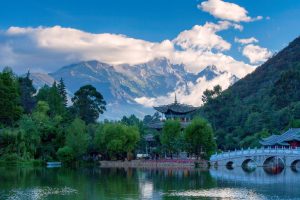
Drive to Lijiang. You will be relaxed around Lijiang Old Town, a well-preserved old city of ethnic minorities with brilliant culture, is a central town of the Lijiang Autonomous County of the Naxi Ethnic Minority in Yunnan Province. Located on the plateau which is 2,400 meters above the sea level and embraced by the tree-covered Lion Mountain in the west, Elephant and Golden Row Mountains in the north, vast fertile fields in the southeast and crystal clear water running through, the old town looks like a big jade ink slab, therefore got the alias the Town of Big Ink Slab (Dayanzhen).
Then visit the Black Dragon Pool(also Heilongtan), or Jade Spring(Yuquan) Park is the main headwater of the Yushui River which goes through the Old Town. People believe that the gods of the Naxi people are living in the chestnut woods, beside the mouth of springs, behind the carved doors and below the bridges. The springs come from the god-protected mountains and gather in this place and finally form the dragon pool. Then water goes down a waterfall and becomes the Yuhe River, pouring life to the Old Town.
Afterwards, visit Shuhe Old Town. It is not only a very important town in the Tea-horse Road that leads to Tibet, but also a famous cobbler town. The cobblers here are as skillful as those in Italy. The leather products that they make are the best seller in Tea-horse Road. Because of trading activities along this road, the Naxi people gradually gave up the nomadic life and settled for farming and later started to do business.
Day 12 Lijiang
Sightseeing and Activities: Yulong Snow Mountain, Yuhu Village and the Former Residence, Baisha Village and Murals
Accommodation: Lijiang
Meals: Breakfast, Lunch

Enjoy the sunrise of the Jade Dragon Snow Mountain and Lijiang Ancient Town in the morning, drive about 30KM to Ganhaizi Meadow(3100M), you will take the sightseeing bus for a short visiting through the Baishuihe River, take the chairlift up to visit Jade Dragon Snow Mountain. The cableway will be arranged according to the condition of the mountain. You will hike around 1 hour in the original forest in Spruce Meadow(3200M).
After lunch, you you’ll visit Yuhu Village and the Former Residence of Joseph Rock who was an Austria-American botanist and explorer, lived in Yuhu village and other places in that region from 1922 to 1949. He was also a naturalist and Photographer, and the first foreign scholar to introduce Lijiang ethnic culture to the western world.
Stroll through Baisha Old Town, which is an enchanting traditional Naxi style old town. Visit the Baisha Mural about 600 years old, which is one part of the World Cultural Heritage by the UNESCO 1997.
Day 13 Departure from Lijiang
Sightseeing and Activities: Departure from Lijiang
Accommodation:
Meals: Breakfast
Departure from Lijiang. Service ends.
Recommended Hotels
| Destination | 5 Star | 4 Star | 3 Star | Hostels |
| Lijiang | Lijiang Hilton Garden Inn | Wangfu Hotel | Baisha Holiday Resort |
Erma’s Inn |
| Kunming | Crown Plaza Kunming City Centre | Wenhui Hotel | Baiyun Hotel |
T&T Story Hotel |
| Dali | Hilton Dali Resort And Spa | Landscape Hotel | Gnosis Hotel |
Dali Fengxue Gucheng |
| Shangrila | Shangrila Hotel | Zhaxidele Hotel | Shenqu Hotel | Wu Fu South Yunnan Boutique Inn |
| Liming | / | / | / | Local Guesthouse |
| Haba Village | / | / | / | Local Guesthouse |
Service Included:
1.Admission fees for all of the sightseeing spots listed in the itinerary;
2.Meals as listed in the itinerary;
3.Accommodation with breakfast as listed in the itinerary;
4.Private English-speaking tour guide and vehicle for transfers & sightseeing;
5.Service charge & government taxes;
6. Luggage transfers between airports and hotels;
7. Two bottles of mineral water each day.
Service Excluded:
1.Any arrival and departure international airfares or train tickets;
2.Chinese visa fees;
3.Excess baggage charged by Airlines;
4.Single room supplement;
5.Tips to guides and drivers;
6.Personal expenses and gratuities to service staff;
7.Personal travel insurance;
8.All optional programs
Travel Tips:
-Visitors are advised to always carry changes of clothing due to the large variations in temperature between day and night.
-The climate is relatively dry, so drink more water every day.
-Protecting oneself from strong UV radiation at high altitude.
-Protecting oneself from altitude sickness. Lessen the effects of altitude sickness, avoid strenuous exercise and have plenty of rest.
-Respect local customs , habits, and religious beliefs.
-Situated on the northern edge of the tropical zone, Xishuangbanna area is hot, humid and rainy; don’t forget to take an umbrella or a raincoat when go out.
-When take photos, please pay attention to your safety, do not shoot in dangerous areas.
All Haba Snow Mountain Climbing and Hiking Tours
4 Days Haba Snow Mountain Climbing Adventure with Tiger Leaping Gorge Tour
5 Days Haba Snow Mountain Climbing (Camping at 4800M) with Tiger Leaping Gorge Tour
5 Days Haba Snow Mountain Flowers Hiking Tour with Black Lake and Yellow Lake
5 Days Haba Snow Mountain Circumambulation Hiking Tour (Finishing in North Slope)
5 Days Haba Snow Mountain Circumambulation Hiking Tour (Finishing in Qiaotou Town)
6 Days Haba Snow Mountain Summit Climbing Tour with Haba Circumambulation Trekking
7 Days Haba Snow Mountain Circumambulation Hiking and Climbing Tour
7 Days Haba Snow Mountain Climbing Tour and Tiger Leaping Gorge Trekking
9 Days Lijiang and Shangrila Adventure Tour with Haba Snow Mountain(5396M) Climbing
11 Days Yunnan Classic Tour with Haba Snow Mountain (5396M) Climbing Adventure
12 Days Lijiang and Shangri-La Adventure with Haba Snow Mountain Climbing and Baoshan Stone Town
13 Days Best Yunnan Flowers Trip to Snow Mountains between May and June
The Most Popular Hiking Tours of Tiger Leaping Gorge
1 Day Upper Tiger Leaping Gorge Tour (Lijiang Part)
1 Day The Upper Tiger Leaping Gorge Tour (Shangri-La Part)
1 Day Middle Tiger Leaping Gorge Trekking Group Tour (Finishing in Lijiang or Shangri-La)
1 Day Tiger Leaping Gorge Highlight Hiking Tour from Bendiwan Village to Tina’s Hostel
2 Days Tiger Leaping Gorge Hiking Group Tour (Back to Lijiang from Hetaoyuan Village)
2 Days Tiger Leaping Gorge Trekking Tour with Daju Town and Jade Dragon Snow Mountain
3 Days The First Bend of Yangtze River Rafting and Tiger Leaping Gorge Tour
3 Days Tiger Leaping Gorge Hiking Tour From Qiaotou Town to Haba Village
4 Days Haba Snow Mountain Climbing Adventure with Tiger Leaping Gorge Tour
5 Days Lijiang City Tour with Tiger Leaping Gorge Hiking Adventure
6 Days Lijiang Hiking Tour around Tiger Leaping Gorge and Jade Dragon Snow Mountain
7 Days Lijiang and Shangri-La Paradise Tour with Tiger Leaping Gorge Hiking Adventure
9 Days Kunming Dali Lijiang and Shangri-La Classic Tour with Tiger Leaping Gorge Hiking Adventure
In this 14 Days Cycling Tour from Shangri-La to Lijiang and then to Dali. You will enjoy the top attractions of Shangri-La, Lijiang and Dali. Moreover, you will pass by many wonderful sceneries such as Baishuitai Terraces and Tiger Leaping Gorge, etc. Besides natural sceneries, you will step into ethnic villages of Tibetan, Naxi and Bai to fully appreciate the ethnic cultures and daily lives of local people. Spend your leisurely time in ancient towns such as Dukezong, Lijiang and Dali Ancient Town. This is a wonderful cycling tour of Yunnan.
Highlights
- Cycling along the Ancient Tea-Horse Trade Road with the fabulous natural views of Yunnan – national parks, snow mountains, grand canyons, rapid Yangtze River and blue lakes.
- Meet colorful ethnic villages and tribal groups to appreciate the diverse ethnic cultures of Yunnan.
- Visit ancient towns with profoud history and ethnic cultures – Dukezong Ancient Twon, Baisha Old Town, Lijiang Ancient Town, Shuanglang Old Town and Dali Old Town.
Brief Itinerary
- Day 1: Shangri-La Arrival
- Day 2: Shangri-La
- Day 3: Shangri-La – Baishuitai
- Day 4: Baishuitai – Middle Tiger Leaping Gorge
- Day 5: Middle Tiger Leaping Gorge – Daju Town
- Day 6: Daju Town – Yulong Snow Mountain – Baisha
- Day 7: Baisha – Lijiang Ancient Town – Baisha
- Day 8: Lijiang – Lashihai – Shigu
- Day 9: Shigu – Jianchuan – Shaxi
- Day 10: Shaxi – Liantie
- Day 11: Liantie – Xiashankou
- Day 12: Xiashankou – Dali – Shuanglang
- Day 13: Shuanglang – Haidong – Dali
- Day 14: Dali Departure
Google Map
Detailed Itinerary
Day 1 Shangri-La Arrival
Sightseeing and Activities:Arrive in Shangri-La
Accommodation:Shangri-La
Meals:None
Arrive in Shangri-La. Picked up by the tour guide and transferred to your hotel.
Day 2 Shangri-La
Sightseeing and Activities:Songzanlin Monastery, Naphai Lake, Dukezong Ancient Town, Guishan Hill, Tibetan Family
Accommodation:Shangri-La
Meals:B,L
Cycling to Songzanlin Monastery in the morning, after lunch, ride around Naphai Lake and the grassland. Visit Dukezong Ancient Town and the largest Prayer Wheel on the top of Guishan Hill. Enjoy the Tibetan Family with Tibetan dance and music at night.
Day 3 Shangri-La-Baishuitai
Sightseeing and Activities:Pudacuo National Park, Baishuitai, Haba Snow Mountain
Accommodation:Baishuitai
Meals:B,L

We begin with a short transfer out of town, passing through arid plateau on towards Pudacuo National Park where to start the day’s cycling. We set off on the bikes with a downhill stretch on good road and continue during the day to cycle a series of valleys and mountains through a changing rural scenery gradually descending to the village of Baishuitai. Our final stretch of the route brings us through conifer forest. Located below the Haba Snow Mountain(the other side of Tiger Leaping Gorge), Baishuitai is famed for its natural mineral terraced White Water Tables created by calcium carbonate deposits from the melting mountain spring water.
Day 4 Baishuitai-Middle Tiger Leaping Gorge
Sightseeing and Activities:Haba village, Yangtze River Valley
Accommodation:Middle Tiger Leaping Gorge
Meals:B,L

We set off today with a few gentle hills before challenging a more serious climb. Once we reach the top of the pass we will have views of the magnificent Haba Mountain peaks. The highest point is at a dizzying 5,396m. With alpine moraine lake, endless clusters of azalea and waterfalls cascading down snow-covered cliffs, the glacier on the Haba Snow Mountain is the southmost glacier in China. We make a short descent into Haba Village, whose resident minorities include Naxi, Hui (Muslim) and Yi peoples, as well as a few Tibetans.
This afternoon we climb to our next pass then cycle down into the Yangtze River Valley. At the village of Yonke we turn into the legendary Tiger Leaping Gorge, one of the world’s deepest ravines. Cutting its path between Haba Mountain and Jade Dragon Snow Mountain your surroundings will be as dramatic as the place names suggest.
Day 5 Tiger Leaping Gorge – Daju Town
Sightseeing and Activities:Tiger Leaping Gorge
Accommodation:Daju Town
Meals:B,L

Enjoy the nice view of Tiger Leaping Gorge today. A day off the bikes and time to enjoy your beautiful natural surroundings. The home of ancient Lijiang culture, there are a series of caves populated in ancient times where you can see rock paintings and artifacts that tell the story of times past. At the mouth of the gorge is the famed Tiger leaping boulder where the pounding waters swirl dramatically and legend has it that the mythical big cat crossed the river.
Ride to Daju Town for overnight.
Day 6 Daju Town-Jade Dragon Snow Mountain-Baisha
Sightseeing and Activities:Jade Dragon Snow Mountain, Baisha Old Town
Accommodation:Baisha
Meals:B,L
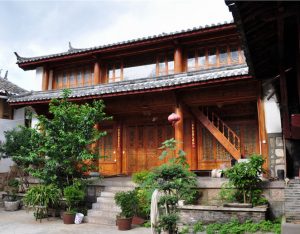
From the west end of the gorge we cycle towards the Yangtze, and up over the pass with a long 1475m climb up the southern slope of the Dragon Snow Mountain for 36km to the top. Then is downhill all the way to Lijiang. Snow-capped and often shrouded in mist, Dragon Snow Mountain is a sanctuary for rare animals and wild plants with unique micro climates on the different slopes. It is also known as a natural glacier museum and is now a famous scenic spot for tourists and scientific research.
We ride down from the Jade Dragon Snow Mountain and arrive at Baisha Old Town in the late afternoon.
Stay at Baisha Holiday Resort Lijiang which is a typical Naxi ethnic courtyard with a nice view of Jade Dragon Snow Mountain from a far.
Day 7 Baisha – Shuhe- Lijiang Old Town-Baisha
Sightseeing and Activities:Shuhe Old Town, Lijiang Old Town, Black Dragon Pool, Dongba Culture Museum
Accommodation:Baisha
Meals:B,L
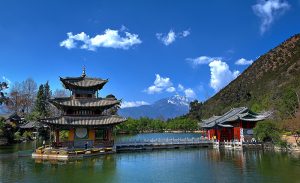
Ride 3 KM from Baisha Old Town to Shuhe Old Town in the morning.
Surrounded by magnificent mountain scenery, Lijiang Old Town is a well-preserved city of diverse ethnic minorities, rich in traditional culture. With narrow streets and traditional buildings, the Old Town is built along the lie of mountains and the flow of rivers. We have a day off the bikes to wander the cobbled lanes, learn about Naxi culture and marvel at the detail and blend of architectural influences in the town. The stone bridges and intricately carved buildings lead away from a central square in four directions which ever way you wander you’ll follow lanes decoratively decked in traditional lanterns and an array of flowers.
Ride to visit Black Dragon Pool and Dongba Culture Museum after visiting Lijiang Old Town.
Ride 10KM back to Baisha Old Town in the afternoon.
Day 8 Lijiang-Lashihai-Shigu
Sightseeing and Activities:Lashi Lake, Shigu Town, First Bend of the Yangtze river
Accommodation:Shigu
Meals:B,L
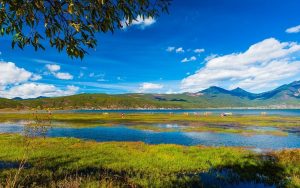
Leaving Lijiang we cycle a gentle 8km to reach the beautiful Lashi Lake (New Basin), a nature reserve rich in biodiversity. The endangered black necked crane can be seen here. The Naxi and Yi minorities live in this area. We loop around the lake beginning on paved road which leads us through Naxi villages. The terrain becomes rougher as we loop back. Joining a bigger road, we continue on uphill towards a 2,900m pass through a scenery of fields and pine forest with the white towering peaks of Jade Dragon Snow mountain coming into view.
Over the pass, we cycle down toC encountering the famous First Bend of the Yangtze River where the waters take a dramatic 90 degree turn. The the Red Army crossed the Yangtze here en route to Tibet and a sculpture marks the spot. We take a boat to cross to our accommodation for the night.
Day 9 Shigu-Jianchuan-Shaxi
Sightseeing and Activities:Shaxi Old Town
Accommodation:Shaxi
Meals:B,L

We cycle mainly downhill today through more rural landscapes of mountain and valley following the old Tibet highway. There is little in the way of traffic and toward the end of today’s ride we journey through a forest of Eucalyptus and conifers to reach the traditional Shaxi Old Town. Known as the last Tea Horse town Shaxi village is home of the Bai people, a matriarchal community where children take their mother’s name.
With more sunshine, annually than California the area has rich natural biodiversity. Victorian botanists and flower hunters were drawn here to collect specimens for the ornamental gardens of Europe and America including orchids, roses, rhododendrons, azaleas, and magnolias, to name but a few. There is an interesting Caravan Museum in the town.
Day 10 Shaxi-Liantie
Sightseeing and Activities:Heihui River
Accommodation:Liantie
Meals:B,L
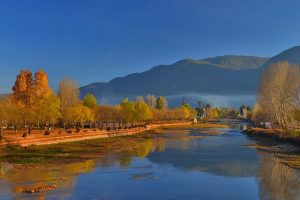
We have a gentle day, we leave Shaxi riding through valley along the Heihui River passing farms and rice terraces. We pass through several small villages. The road was used by the horse caravans transporting tea and salt between villages travelling as far as to Tibet and India. It was named the tea horse road because of the common trade of Tibetan ponies for Chinese tea.
We arrive in Liantie Town of Eryuan County in the late afternoon.
Day 11 Liantie-Xiashankou
Sightseeing and Activities:Xiashankou Hot Spring Village
Accommodation:Xiashankou
Meals:B,L
We begin cycling with a tough but scenic 22km climb up CangShan mountain taking us to the pass at 3,022m. There is an exhilarating 22km downhill on the other side, though we need to take care over the rough surfaced road. We ride another 10 km to reach XiaShanKou Hot Springs Village where we can soothe our sore muscles in the famous hot springs.
Day 12 Xiashankou-Dali-Shuanglang
Sightseeing and Activities:Erhai Lake, Shuanglang Town
Accommodation:Shuanglang
Meals:B,L
We set off for our last day on the bikes as we head to the historical town of Dali. We cycle along a flat paved road between the towering Cangshan Mountain range and Erhai Lake. One of China’s largest freshwaters Er Hai is an alpine fault lake. Its name means “Ear-shaped Sea”.
Ride along the Erhai Lake to Shuanglang Town.
Day 13 Shuanglang-Haidong-Dali
Sightseeing and Activities:Erhai Lake, Haidong Town, Dali Old Town
Accommodation:Dali
Meals:B,L
Today cycle around Erhai Lake from Shuanglang Town to Dali via Haidong Town.
Arrive in Dali Old Town in the late afternoon.
Day 14 Dali Departure
Sightseeing and Activities:Departure from Dali
Accommodation:None
Meals:B
Departure from Dali. Service ends.
Recommended Hotels
| Destination | 5 Star | 4 Star | 3 Star | Hostels |
| Shangri-La | Shangri-La Hotel | E-outfitting Boutique Hotel | Bodhi Boutique Hotel | Wu Fu South Yunnan Boutique Inn |
| Baisha | Solo Wandering Snow Mountain Manor | Prajina Homestay | Baisha Holiday Resort Lijiang | Zhuzhu Zaijia Inn |
| Lijiang | InterContinental Lijiang Ancient Town Resort | E-outfitting Boutique Hotel | Liwang Hotel | Flowers Hall Inn |
| Shaxi | Shaxi Lanlinge Hotel | Shaxi Aoding Courtyard | Shaxi Xia La Zhe Yododo Inn | Another Encounter |
| Dali | Hilton Dali Resort and Spa | E-outfitting Boutique Hotel | Gnosis Hotel | Fengxuegucheng |
Service Included:
- Admission fees for all of the sightseeing spots listed in the itinerary;
- Meals as listed in the itinerary;
- Hotels as listed in the itinerary;
- Private English-speaking tour guide;
- Private vehicle for transfers & sightseeing with skilled driver;
- Service charge & government taxes;
- Luggage transfers between airports and hotels.
Service Excluded:
- Any arrival and departure international airfares or train tickets;
- Chinese visa fees;
- Excess baggage charged by Airlines;
- Single room supplement;
- Tips to guides and drivers;
- Personal expenses and gratuities to service staff;
- Personal travel accident insurance;
- All optional programs.
This cycling tour from Shangri-La to Lijiang will bring you to visit the main highlghts of Shangri-La and Lijiang. It is not only about natural landscapes, but also culture exploration, you will step into ancient towns and ethnic villages to discover ancient history and diverse ethnic cultures. Moreover, you will trek along the grand Tiger Leaping Gorge to fully appreciate the charm of the gorge.
Highlights:
- Explore the earthly paradise with Tibetan Lama monastery, primitive forest, crystal lakes and hospital people.
- Cycle from Shangri-la to Lijaing, feel the true charm of nature.
- Lose yourself in Tiger Leaping Gorge, the deepest gorge in the world.
- Step into the fantastic Lijiang Old Town and know the mysterious Dongba culture.
Brief Itinerary
- Day 1: Shangri-La Arrival
- Day 2: Shangri-La
- Day 3: Shangri-La-Baishuitai
- Day 4: Baishuitai-Tiger Leaping Gorge
- Day 5: Tina’s Hotel
- Day 6: Tina’s hostel-Daju
- Day 7: Daju-Lijiang
- Day 8: Lijiang
- Day 9: Lijiang Departure
Google Map
Detailed Itinerary
Day 1 Arrive in Shangri-La
Sightseeing and Activities: Arrive in Shangri-La
Accommodation: Shangri-La
Meals: None
Arrive in Shangri-La, meet your tour guide and driver at the airport and transfer to hotel.
Day 2 Shangri-La
Sightseeing and Activities: Songzanlin Monastery, Naphai Lake, Dukezong Ancient Town, Guishan Hill, Tibetan Family
Accommodation: Shangri-La
Meals: Breakfast and Lunch
Cycling to visit Songzanlin Monastery in the morning, after lunch, ride around Naphai Lake and the grassland. Visit Dukezong Ancient Town and the largest Prayer Wheel on the top of Guishan Hill. Join the Tibetan Family with Tibetan dance and music at night.
Day 3 Shangri-La-Baishuitai
Sightseeing and Activities: Baishuitai, Cycling, Pudacuo National Park
Accommodation: Baishuitai
Meals: Breakfast and Lunch

We begin with a short transfer out of town, passing through arid plateau towards Pudacuo National Park where to start the day’s cycling. We set off on the bikes with a downhill stretch on good road and continue cycling through a series of valleys and mountains, as well as a changing rural scenery gradually descending to the village of Baishuitai. Our final stretch of the route brings us through conifer forest. Located below the Haba Snow Mountain (the other side of Tiger Leaping Gorge), Baishuitai is famed for its natural white water terrace created by calcium carbonate depositing from the melting mountain spring water.
Day 4 Baishuitai-Haba Village-Middle Tiger Leaping Gorge
Sightseeing and Activities: Haba village, Yangtze River Valley, Cycling
Accommodation: Tina’s Hostel
Meals: Breakfast and Lunch
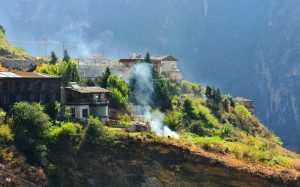
We set off today with a few gentle hills before challenging a more serious climb. Once we reach the top of the pass we will have views of the magnificent Haba Mountain peaks. The highest point is at a dizzying 5,396 meters. With alpine moraine lake, endless clusters of azalea and waterfalls cascading down snow-covered cliffs, the glacier on the Haba Snow Mountain is the southmost glacier in China. We make a short descent into Haba Village, whose resident minorities include Naxi, Hui (Muslim) and Yi peoples, as well as a few Tibetans.
This afternoon, we climb to our next pass then cycle down into the Yangtze River Valley. At the village of Yonke we will turn into the legendary Tiger Leaping Gorge, one of the world’s deepest ravines.
Day 5 Tina’s Hostel-Bendiwan Village-Tina’s Hostel
Sightseeing and Activities: Middle Tiger Leaping Gorge, Bendiwan Village, Guanyin Waterfalls
Accommodation: Tina’s Hostel
Meals: Breakfast and Lunch

Today you will visit Middle Tiger Leaping Gorge. You will spend your half day trekking and half day free in the gorge. After breakfast, trek from Tina’s Guesthouse up to Bendiwan Village, you will visit Guanyin Waterfalls, Bamboo Forest, Guanyin Temple, Wuzhishan (Five Fingers) Mountain, Dashengou Waterfalls, Sheshen Cliffs, Qianyan Stone House.
You will have lunch in Halfway Guesthouse in Bendiwan Village. Halfway Guesthouse is the best position to enjoy the Tiger Leaping Gorge and the thirteen peaks of Jade Dragon Snow Mountain. After lunch, trek about one hour down to the road and your driver will pick you up and transfer back to Tina’s Guesthouse. You will be free in the afternoon and explore the Middle Tiger Leaping Gorge by yourself.
Day 6 Tina’s Hostel-Middle Tiger Leaping Gorge-Daju
Sightseeing and Activities: the Lower Tiger Leaping Gorge, Middle Rapids, Walnut Grove Garden Village, Xincun Village, Daju Town
Accommodation: Daju
Meals: Breakfast and Lunch
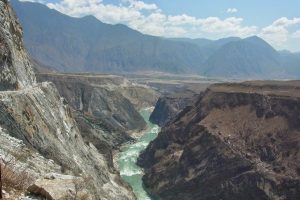
In the morning, you will trek down to the Middle Rapids of Jinsha River, you will witness the narrowest part of the Tiger Leaping Gorge. Trek through the Yixiantian(Tiny Sky), which is considered as a very dangerous section of a few dozen meters long. You will trek to the Walnut Grove Garden(Hetaoyuan in Chinese) and drive back to Tina’s Hostel for your lunch. After lunch, ride to the Lower Part of Tiger Leaping Gorge. You will arrive at HaLong Meng Guesthouse and have a panoramic view of Daju before cross the Daju Ferry. Take the bike down to Jinsha River and take the boat to Daju Town.
Day 7 Daju-Jade Dragon Snow Moutain-Lijiang
Sightseeing and Activities:Jade Dragon Snow Moutain, Yake Meadow, Ganhaizi Meadow, Baisha Old Town and Murals, Lijiang Old Town
Accommodation: Lijiang
Meals: Breakfast and Lunch

In the morning, the driver will pick you to Jade Dragon Snow Mountain, and then take the chairlift up to Yak Meadow(3700 meters), which is the best location to enjoy the nice view of Jade Dragon Snow Mountain. You will pay a visit to the Lama monastery and walk around the Yak Meadow.
Take the chairlift back to the Bus Station and continue the cycling to Ganhaizi Meadow for your lunch in Dongbala Restaurant. In the afternoon, ride down to Baisha Old Town and visit Baisha Murals. Ride 10 km more to Lijiang Old Town, finish your cycling and visit the night view of Lijiang Old Town.
Day 8 Lijiang
Sightseeing and Activities: Lijiang Old Town, Lashihai Lake, Shuhe Old Town, Black Dragon Pool and Dongba Museum
Accommodation: Lijiang
Meals: Breakfast and Lunch

Around 9 o’clock in the morning, drive 30 minutes to the entrance of the Lashihai Lake. Then start biking around the lake for 2-3 hours and visit some Naxi villages, Zhiyun Monastery, and the different crops in the farmland. Lashi Lake is a Nature Reserve and is a haven for migratory birds. More than 70 species of birds come to nest in this area during the winter. At noon, you will ride to have some delicious local food for your lunch at a friendly Naxi family.
After lunch, you will ride down to Shuhe Old Town , which is the important town of the Tea Horse Trade Caravan from the upper Mekong River to Tibet and India. You will visit the Tea Horse Trade Caravan Museum in Shuhe Old Town.
After Shuhe, you will ride about 4 Km to Black Dragon Pool , which is the main headwater of the Yushui River that goes through the Old Town. It is just like the bright eyes of the town, shining with the wisdom. Pay a visit to the Dongba Ethnic Museum and learn the Naxi Dongba culture. Ride back to Lijiang Old Town and stroll around by your own.
Day 9 Departure from Lijiang
Sightseeing and Activities: Departure from Lijiang
Accommodation: None
Meals: Breakfast
Enjoy your leisure time before going to Lijiang airport for the departure flight. Service ends.
Recommended Hotels
| Destination | 5 Star | 4 Star | 3 Star | Hostel |
|---|---|---|---|---|
| Shangri-La | Shangri-La Resort | E-outfitting Hotel | Bodhi Boutique Inn | Guzang Xiangbala Wu Fu Diannan Bountique Inn |
| Lijiang | InterContinental Hotel | E-outfitting Hotel | Liwang Hotel | Flowers Hall Inn |
| Daju | / | / | / | Local Guesthouse |
| Baishuitai | / | / | Hejia Hotel | / |
Service Included:
- Admission fees for all of the sightseeing spots listed in the itinerary;
- Meals as listed in the itinerary;
- Hotels as listed in the itinerary;
- English-speaking tour guide;
- Private vehicle for transfers & sightseeing with skilled driver;
- Service charge & government taxes;
- Luggage transfers between airports and hotels.
Service Excluded:
- Any arrival and departure international airfares or train tickets;
- Chinese visa fees;
- Excess baggage charged by Airlines;
- Single room supplement;
- Tips to guides and drivers;
- Personal expenses and gratuities to service staff;
- Personal travel accident insurance;
- All optional programs.
The Most Popular Tours Packages of Tiger Leaping Gorge
1 Day Upper Tiger Leaping Gorge Tour (Lijiang Part)
1 Day The Upper Tiger Leaping Gorge Tour (Shangri-La Part)
1 Day Middle Tiger Leaping Gorge Trekking Group Tour (Finishing in Lijiang or Shangri-La)
1 Day Tiger Leaping Gorge Highlight Hiking Tour from Bendiwan Village to Tina’s Hostel
2 Days Tiger Leaping Gorge Hiking Group Tour (Back to Lijiang from Hetaoyuan Village)
2 Days Tiger Leaping Gorge Trekking Tour with Daju Town and Jade Dragon Snow Mountain
3 Days The First Bend of Yangtze River Rafting and Tiger Leaping Gorge Tour
3 Days Tiger Leaping Gorge Hiking Tour From Qiaotou Town to Haba Village
4 Days Haba Snow Mountain Climbing Adventure with Tiger Leaping Gorge Tour
5 Days Lijiang City Tour with Tiger Leaping Gorge Hiking Adventure
6 Days Lijiang Hiking Tour around Tiger Leaping Gorge and Jade Dragon Snow Mountain
7 Days Lijiang and Shangri-La Paradise Tour with Tiger Leaping Gorge Hiking Adventure
9 Days Kunming Dali Lijiang and Shangri-La Classic Tour with Tiger Leaping Gorge Hiking Adventure
Jiandan (February 8th) Festival of Naxi Ethnic Minority
Overview Also known as Eryueba Festival (二月八) or February 8th Festival, this traditional celebration occurs on the 8th, 18th and 28th days of the second lunar month among Naxi communities in Lijiang Basin...
Eryueba (February 8th) Festival of Naxi Ethnic Minority in Baishuitai
Overview Also known as Baishuitai Song Contest Festival (白水台赛歌会) or February 8th Festival (二月八节), this traditional celebration occurs annually on the 8th day of the second lunar month at Baishuitai (白水台) in Sanba Township (三坝乡), Shangri-La...
Baishuitai History in Shangri-La, Diqing
White Water Terrace|(Baishuitai) Baishuitai or Baishui Tableland, also named the White Water Terraces, is located in the foothills of the Haba Snow Mountains, 101 kilometers (about 62 miles) southeast...
Baishuitai Entertainment in Shangri-La
Nestled on the northern slopes of Haba Snow Mountain (哈巴雪山) in Shangri-La (香格里拉), Baishuitai (白水台) is a breathtakingly beautiful destination. Beyond its stunning natural landscapes, it serves as the...
Baishuitai Culture in Shangri-La, Diqing
The breathtaking Baishuitai terraces represent both natural wonder and spiritual birthplace. Situated in Baidi Village (白地村), Shangri-La County (香格里拉县), this three-square-kilometer sinter terrace formation – China’s largest R ...
10 Days Shangri-La Hiking Tour with Tiger Leaping Gorge and Niru Alpine Pasture
Lijiang-Tiger Leaping Gorge-Haba Village -Baishuitai-Niru Village-Shudu Lake-Shangrila
13 Days Yunnan Muslim Tour (Kunming-Jianshui-Yuanyang-Kunming-Dali-Lijiang-Shangri La)
Kunming-Tonghai-Jianshui-Gejiu-Shilin-Dali-Weishan-Lijiang-Shangri-la
How to Travel from Tiger Leaping Gorge to Haba Snow Mountain and Baishuitai
Location: Northwest Yunnan, near Lijiang Description: A difficult yet amazing trek in one of the world’s deepest and most marvelous gorges. It passes through some of the most naturally stunning and diverse...
Baiyuyuan Hotel in Baishuitai, Diqing
Hotel Information Opening Year: 2018. Rooms & Facilities: The hotel offers various room types, including standard double rooms, king-bed rooms, family rooms, and deluxe triple rooms. All rooms are...
13 Days Best Yunnan Flowers Trip to Snow Mountains between May and June
Kunming-Dali-Lijiang-Haba Snow Mountain-Shangrila
9 Days Shangri-La and Lijiang Cycling Tour with Tiger Leaping Gorge Trekking Adventure
Shangri-la-Baishuitai-Haba Village-Tiger Leaping Gorge-Daju-Jade Dragon Snow Mountain-Lijiang
Tips Before Travel
Bring copies of your passport
Don't assume you're restricted to the main hubs of Beijing and Shanghai, our tours can start from any city.
Register with your embassy
For your safety, please register with the Embassy.
Always have local cash
Exchange some local currency for your trip
Our Team
Customize a Trip
Start planning your tailor-made holiday to China by contacting one of our specialists. Once enquired, you’ll get a response within 0.5~23.5 hours.




















